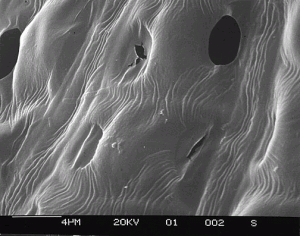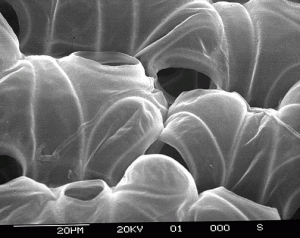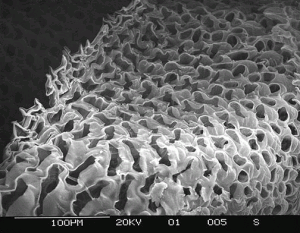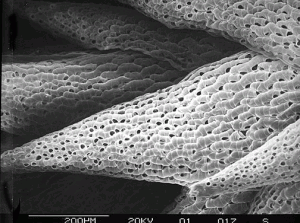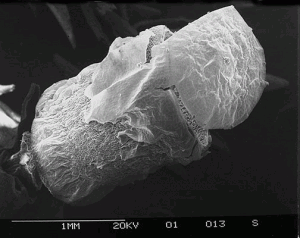Sphagnum henryensi
Them stem and branch leaves are composed of hylaline cells and chlorophyllose cells. The hyaline cells have pores, which allow for water to move into and out of the cell. Here is a photo of developing pores.
Sphagnum mendocinum
There are many pores per hyaline cell.
Hyaline cells also contain fibrils.
Sphagnum papillosum
The stem leaves of Sphagnopsida differ from those of the branch leaves. The stem leaves of Sphagnum papillosum do not have fibrils in the hyaline cells, however some of the hyaline cells are divided.
Sphagnum rubellum
The shoots of Sphagnum rubellum are typically red in color, hence the epithet “rubellum”. Sphagnum spp. leaves are composed of two types of cells, hyaline and chlorophyllose cells. Chlorophyllose cells are the sites of photosynthesis.
Hyaline cells (the larger worm-like cells) are specialized for water retention. Fibrils on hyaline cells aid prevention of the cells collapsing when conditions become drier.
The sporangia of Sphagnum spp. do not have peristome teeth. Rather, spores are dispersed by the build of pressure within the sporangium. When the sporangium is mature and the pressure has reached 3-5 atmospheres, the operculum will pop off and spores are shed in one dispersal event.

